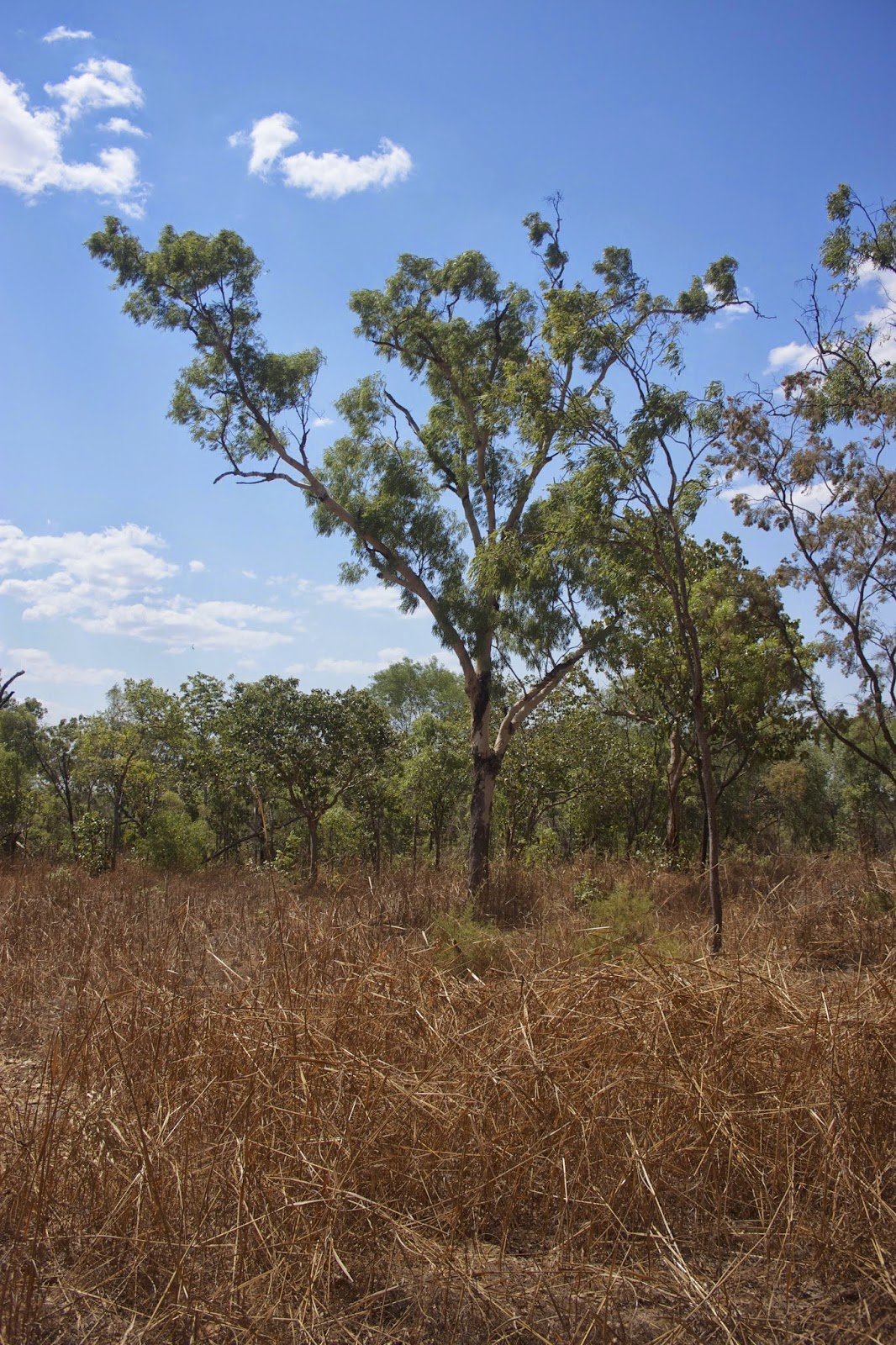The Bardedjilidji Sandstone
Walk coursed through elegant towering sandstone pillars which radiated the
heat. In the wet season this dramatic landscape would have been full of
overflowing billabongs surrounded by lush forests. For us geologists the
natural magnificence of these weathered sandstone formations was beauty
enough. Bardedjilidji is the local word for "walking track".
Some natural
caves were still adorned with Aboriginal art and blackened in places from
smoking fires. Being inside the shade of a cave provided an immediate
temperature drop. We noticed some pits, shallow small saucer like depressions,
in a few slabs in the floor of the caves. We were not sure what use they had
but conjectured perhaps they were used for milling seeds for food or a place
where stone was ground to make ochre paint.
We noticed
some signs of buffalo in the area and kept alert. Buffalos were imported
to Australia in the early 19th century as they were suited to the tropical
conditions and would be a good meat source for the remote northern settlements. Australia
has both the river type from western Asia, with curled horns, and the swamp
type from eastern Asia, with swept-back horns. Inevitably some buffalo
escaped, whilst some where abandoned as settlements failed and a feral population
spread.
Not only the European settlers enjoyed this tasty meat, Aboriginal
people hunted Asian water buffalo with long knives, axes, spears and, more
recently, with guns. By the 1970s, feral buffalo numbers were so high that they
were destroying wetlands and harbouring diseases that could affect native
species and livestock. The Brucellosis and Tuberculosis Eradication Campaign,
developed to protect the meat export industry, has all but eradicated feral
buffalos from the wild except from in Kakadu. It was agreed that a small
herd of tuberculosis-free buffalo could remain to continue the supply
of this bush meat.
We'd learnt
from our cruise that crocodiles lay their eggs in reeds, so we were
particularly wary when the track went through reed beds for a 100m length or
so.
Reminds me of Brimham rocks back home
The indentation in the flat stone is possibly from grinding seeds to make a flour or from grinding ochre for painting
Early rock art was generally hand prints of red or yellow ochre - the oldest dating back more than 40,000 years
The wind and sands of time have carved some extraordinary features into these escarpments
Maximise the sun protection it's 40C in the shade
Sulphur Crested Cockatoos - normally only solitary or in their breeding pairs










Hot lady!!! ❤ you xxxxxx
ReplyDelete